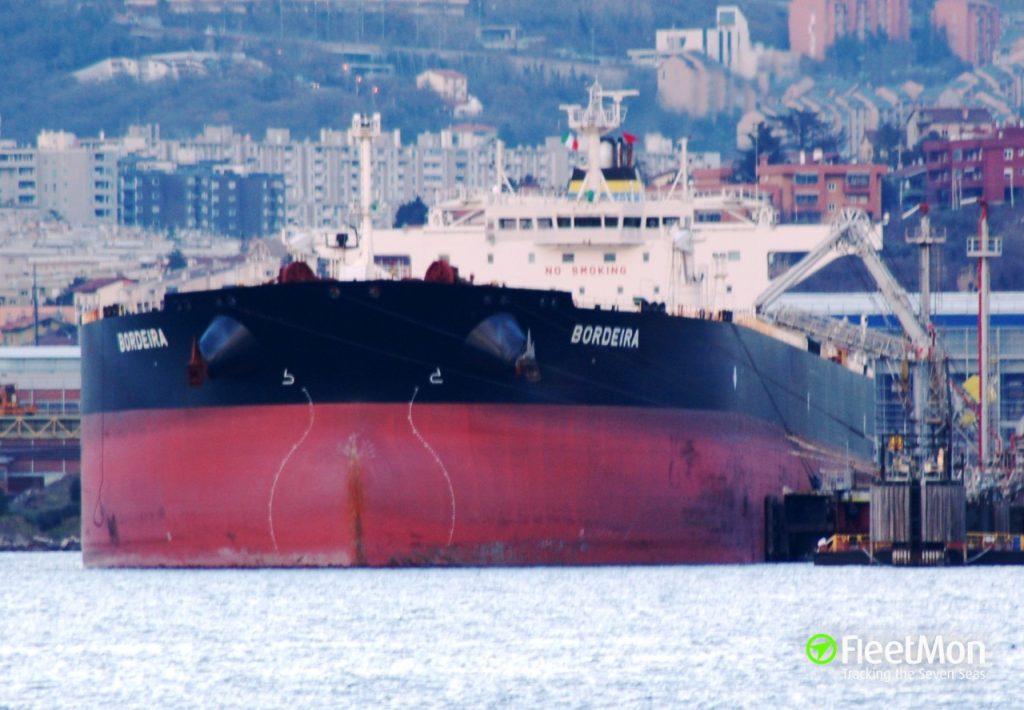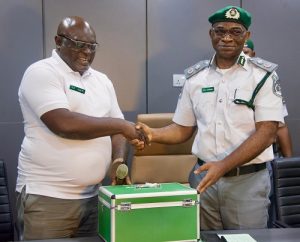Plan to Build Green Energy Bunkering Station in the North Sea

An international consortium of companies is proposing to create a green bunker hub in the Baltic, where ships can refuel with sustainable fuels. The effort follows the recommendation from the Danish government that suggested the island of Bornholm could become a hub in the North Sea and part of the country’s broader plan to develop sustainable resources in the region, reports The Maritime Executive online.
The consortium made up of Orsted, Molslinjen, Haldor Topsoe, Bunker Holding Group, Wartsila, Ramboll, Bureau Veritas and Port of Roenne will explore the opportunities to establish a bunkering station with green maritime fuel on Bornholm. The project will investigate how local Power-to-X can support the need for sustainable fuels for the more than 60,000 ships that pass Bornholm in the middle of the Baltic Sea every year.
“We see great potential in utilizing Bornholm as an energy island to meet the Danish government’s ambitious goal of reducing CO2 emissions. Denmark has a unique opportunity to create an industrial position of strength within the production of sustainable fuels for heavy transport and to create jobs in the process,” said Anders Nordstrøm, Vice President, Head of Hydrogen at Orsted. “Bornholm’s strategic location makes it also ideal as a hub for green energy solutions, and we look forward to exploring the potential for delivering sustainable fuels for shipping from Bornholm.”
The Bornholm Bunker Hub consortium will undertake a feasibility study to explore the financial potential for supplying sustainable fuels in the Baltic Sea produced using offshore wind energy. Their vision for the Bornholm Bunker Hub they believe can also be scaled and contribute significantly to reducing global CO2 emissions.
Bornholm is centrally located along major shipping lanes and well positioned to exploiting the potential of green electricity from offshore wind in the entire Baltic region. The partners believe it can be a center combing the resources of Denmark, Sweden, Poland, and Germany. As part of the project, investigations will also be carried out exploring whether it is appropriate to produce green ammonia locally on Bornholm, or whether this should be imported in the first phase.
Earlier this year, the Danish government announced plans to build the world’s first artificial island in the same region of the North Sea to become a hub for the collection and distribution of electrical power from offshore wind farms. Denmark envisions Bornholm as becoming a center for the energy industry in the region and plans a second energy hub to be located on the island.
The consortium made up of Orsted, Molslinjen, Haldor Topsoe, Bunker Holding Group, Wartsila, Ramboll, Bureau Veritas and Port of Roenne will explore the opportunities to establish a bunkering station with green maritime fuel on Bornholm. The project will investigate how local Power-to-X can support the need for sustainable fuels for the more than 60,000 ships that pass Bornholm in the middle of the Baltic Sea every year.
“We see great potential in utilizing Bornholm as an energy island to meet the Danish government’s ambitious goal of reducing CO2 emissions. Denmark has a unique opportunity to create an industrial position of strength within the production of sustainable fuels for heavy transport and to create jobs in the process,” said Anders Nordstrøm, Vice President, Head of Hydrogen at Orsted. “Bornholm’s strategic location makes it also ideal as a hub for green energy solutions, and we look forward to exploring the potential for delivering sustainable fuels for shipping from Bornholm.”
The Bornholm Bunker Hub consortium will undertake a feasibility study to explore the financial potential for supplying sustainable fuels in the Baltic Sea produced using offshore wind energy. Their vision for the Bornholm Bunker Hub they believe can also be scaled and contribute significantly to reducing global CO2 emissions.
Bornholm is centrally located along major shipping lanes and well positioned to exploiting the potential of green electricity from offshore wind in the entire Baltic region. The partners believe it can be a center combing the resources of Denmark, Sweden, Poland, and Germany. As part of the project, investigations will also be carried out exploring whether it is appropriate to produce green ammonia locally on Bornholm, or whether this should be imported in the first phase.
Earlier this year, the Danish government announced plans to build the world’s first artificial island in the same region of the North Sea to become a hub for the collection and distribution of electrical power from offshore wind farms. Denmark envisions Bornholm as becoming a center for the energy industry in the region and plans a second energy hub to be located on the island.





